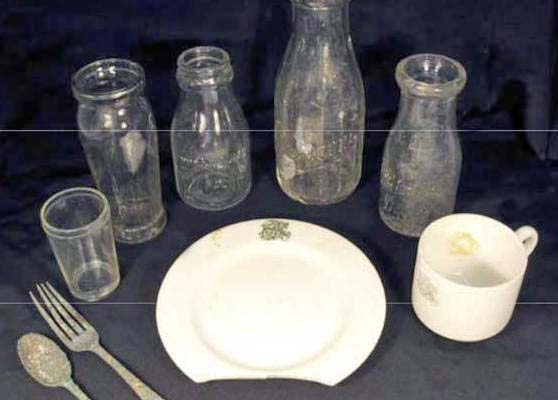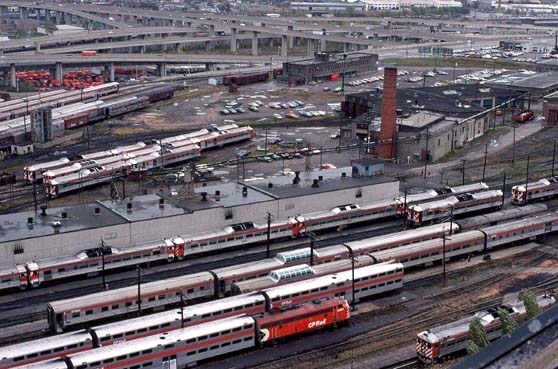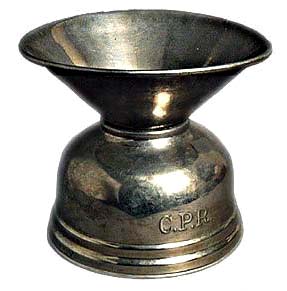
8 December 2010
Crews Dug Into Super Hospital Site's Past

|
A selection of objects found in the Canadian Pacific Railway dump. Most of the items were
used in the railway's dining cars. Interestingly, archaeologists noted a strange absence of bottles used to store wine or liquor. |

Montreal Quebec - At the moment, the Glen Yard is all about the future, the site of a new
super hospital, a makeover for the health-care system in the city, and the latest in medical and environmental technologies.
But before the McGill University Health Centre could begin plowing ahead with construction, it was important to take a look back, to peer into the Glen's past
lives as a pristine prehistoric wilderness, a family homestead, and a bustling rail yard.

Canadian Pacific's Glen Yard and roundhouse - Date/photographer
unknown.
|
"An archaeological potential study was required (by law) for public consultations," said Pierre Major,
associate director of facilities development and construction for the MUHC.
"The MUHC felt it was important to have an inventory of our community's past on this site. It was also an opportunity to look at how our project could
incorporate this rich history in the design of a state-of-the-art health centre that will serve the community at large."
Archaeologists from Ethnoscop, the firm hired by the MUHC and its partners, began work at the Glen Yard in 2005.
The first step was to complete a study into the site's archaeological potential, which was submitted that year.
Researchers used historical records, archived maps, and reports from nearby archaeological sites to determine whether the 211,333-square-metre site might yield
significant artifacts, and if so, where they could be hidden.
The careful unearthing of the Glen's past began in earnest that spring.
Researchers dug 13 trenches, each two to five metres deep, in an attempt to find traces of the prehistoric peoples who once called this region home.
Traces of human occupation were documented in the area as far back as 6,000 years.
Because water levels were higher in the past, at least part of the Glen Yard was situated near a source of fresh water for much of the period prior to European
contact.
But despite the yard's potential, the crews came up empty in their search for prehistoric artifacts.
The historic period, however, was far from uneventful at the site.
The most important discoveries by the Ethnoscop teams in spring 2005 and spring 2006 were the remains of an ancestral home and nearby brick-manufacturing
facility belonging to the Decarie family, the vestiges of a home built in the mid-19th century, the remnants of rail equipment used by Canadian Pacific Railway
beginning in the early 20th century, and a junkyard used by the CPR to dispose of supplies from its passenger cars.
The arrival and expansion of the Canadian Pacific rail operations in the early 20th century meant a lot more human activity at the site.

A typical Canadian Pacific Railway spittoon, not necessarily comparable to the one found at
Glen Yard - Date/photographer unknown.
|
The remains of the rail yard's roundhouse were located, as was a CP dump containing everything from dinnerware to a spittoon.
The Ethnoscop team compiled its findings in a 223-page report, but did not suggest preserving any of the dig sites.
"The house on Lot 188A has delivered all relevant information, and the remains of the Decarie house were too fragmented to be considered valuable,"
the report said.
"However, we recommend a display be created in the new hospital that would allow (the public) to view some of the artifacts unearthed in the house on Lot
188A, the Decarie home, and in the Canadian Pacific dump."
Monique Muise.

|